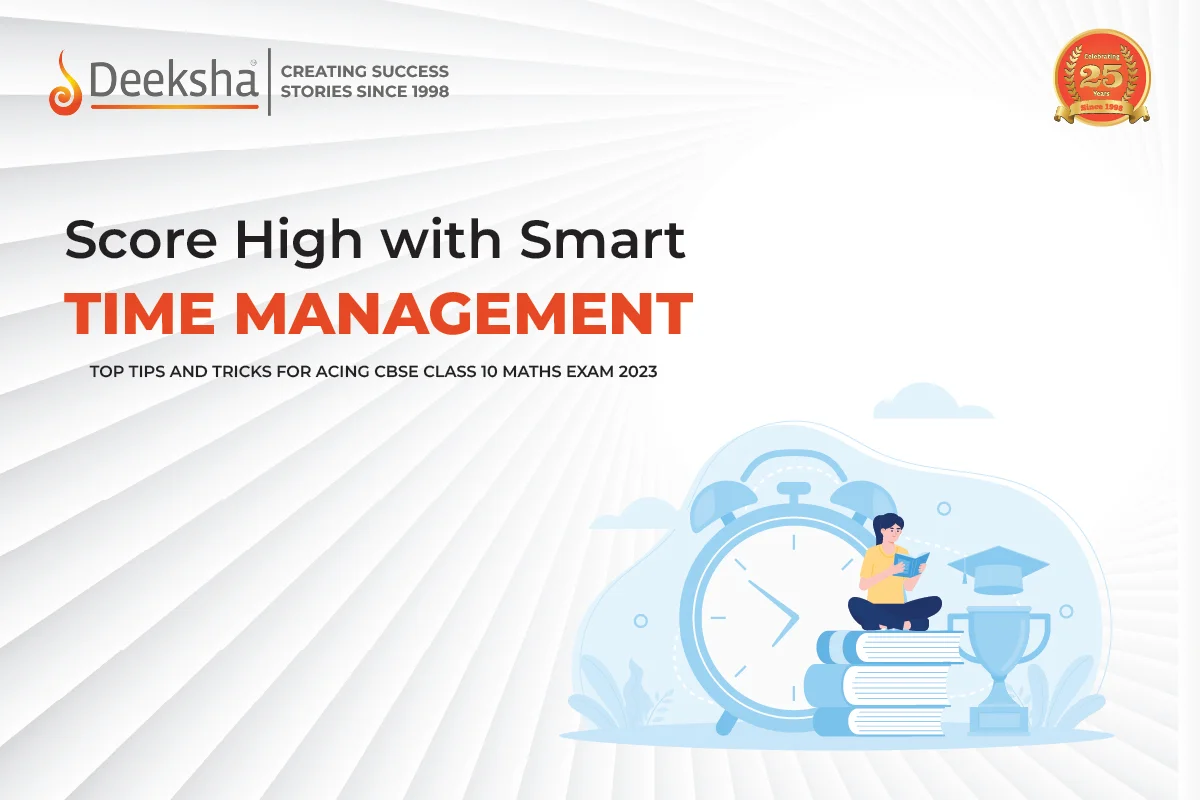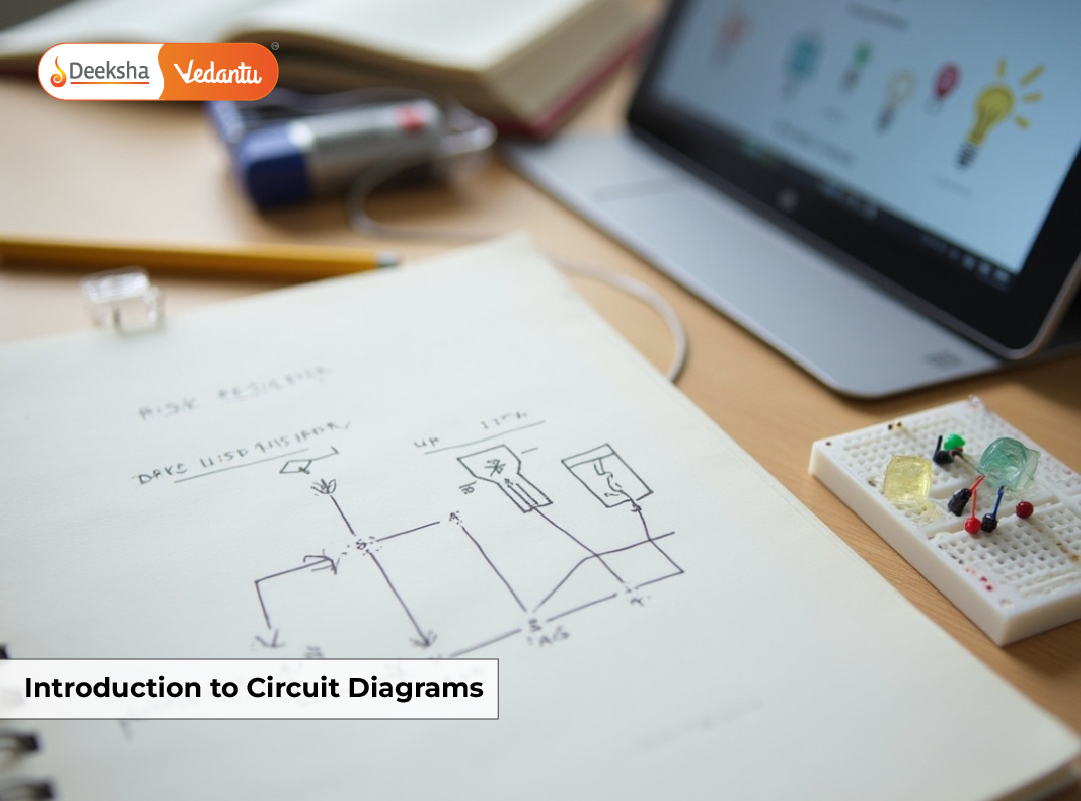What are Some Essential Tricks to Save Time During CBSE Class 10 Maths Exam?
This article will teach you how to save time by breaking down the questions into small sections, prioritizing crucial questions, reading the instructions correctly, and starting with the more manageable sections to save time during the exam.
Here are some valuable tips to save time during the Class 10 CBSE Maths Exam 2023
1. Understand the Exam Format
Knowing the exam’s framework is one of the most important parts of passing the CBSE Class 10 Maths Exam 2023. Class 10 math written exams are worth 80 marks overall.
The Class 10 exam paper is divided into four sections: A, B, C, and D, each with its weightage of marks. Section A has 20 one-mark questions, whereas Section B contains five two-marks questions. Section C has ten three-mark questions, while Section D contains four five-mark questions.
Students’ problem-solving and analytical abilities are examined in the Maths exam. It is critical to grasp the exam structure to organize your study schedule and practice appropriately. Becoming acquainted with the test format lets you prioritize the most important topics and plan your time accordingly.
2. Follow an Effective Exam Strategy
You must develop an excellent exam plan to succeed in the CBSE Class 10 Maths Exam 2023. An exam strategy entails planning, organizing, and preparing for your test. Here are some important pointers to assist you in developing a successful exam strategy:
- Create and stick to a plan that will enable you to complete your exam on time. Allow enough time for each question based on its importance and your ability to answer it accurately.
- Solve the questions in order of weightage and difficulty. Concentrate on the questions that are easy to solve and solve the ones which demand greater attention later.
- Try to recollect the concepts and formulae to guarantee you remember everything while solving the questions. It is also critical to complete as questions as possible to boost your confidence and solve the challenging ones later.
- Manage your time properly during the exam by starting with the simpler questions,
- thoroughly reading the questions, and tackling all of the questions within the time limit.
3. Use Reading Time Properly
If used wisely, the reading time allotted at the start of the CBSE Class 10 Maths Exam may be significant. Students may review the question paper and plan their answer strategy during the reading period.
To make the most of your reading time, carefully read the directions and highlight the main elements. Next, review the entire question paper and decide which questions you confidently answer and which need more attention.
Make a mental note of the questions with the highest weightage and ensure you solve them within the time limit. It is also an excellent idea to start with problems that involve extensive calculations.
Effective use of reading time will help you organize your approach to answering questions and manage your time more efficiently throughout the exam. It can also help you lessen exam anxiety and increase your confidence.
As a result, it is critical to utilize the reading time allotted in the CBSE Class 10 Maths Exam judiciously in order to maximize your performance and score well.
4. Start with Easier Questions First
First, starting with the easy problems is one of the most efficient time management methods for scoring well in the CBSE Class 10 Maths Exam. It can help you generate momentum, boost your confidence, and save time that you can use to answer more complex questions.
Start by swiftly reading the entire question paper and picking the questions that are the easiest to answer. Try answering these questions first since they can help you gain momentum and lessen exam stress.
Before solving the questions, make sure you have thoroughly read the questions and understand the prerequisites. To earn maximum marks, it is also necessary to show all the calculation steps, especially in long-form questions.
After solving the easy problems, go to the more difficult ones that demand more attention and time. Use the time saved by answering the easy questions to answer these questions effectively.
You may improve your performance, manage your time more effectively, and enhance your confidence by starting with easy questions. It can also help you avoid being fixated on a single question, which can save time.
5. Create a Diagram Whenever Needed
Making diagrams may be an excellent time management method for achieving good marks in the CBSE Class 10 Maths Exam. Diagrams can aid in issue visualisation, simplify the solution process, and save time by lowering the number of calculations.
Take the time to draw a nice, precise diagram whenever you encounter a problem that includes forms, graphs, or diagrams. Label the diagram’s various elements and indicate the provided values or unknown variables.
A diagram helps you properly identify the necessary equations or concepts to address the question. It can also assist you in avoiding errors while calculating the appropriate quantities.
For example, problems that require diagrams must be addressed with caution because drawing an accurate diagram can also increase your score. Drawing and labeling diagrams are paramount in the class 10 Maths exam.
However, ensuring that the diagrams are neat and precise and that all data is appropriately labeled is critical. Incorrect diagrams might result in inaccurate answers and a loss of marks.
6. Use Units and Round Off Carefully
Using units and rounding off correctly might help you score well on the CBSE Class 10 Maths Exam. It is critical to comprehend the meaning of units and how they relate to the subject at hand. Furthermore, rounding off figures might help you save time and avoid calculation mistakes.
When dealing with unit-related problems, it is critical to understand and apply the essential conversion factors. Before solving the problem, ensure you’ve recognised the correct units. Converting various units is sometimes necessary, which should be done carefully to avoid errors.
Rounding off numbers is also an excellent way to save time while generally getting accurate results. However, it is critical to be mindful of the question’s needed degree of precision and round off accordingly. For example, if the question requires the answer to be rounded to two decimal places, make sure to do so while considering the chances of rounding mistakes.
It is crucial to remember that while rounding off might be helpful, it is only sometimes necessary. Some questions may need precise answers in decimals, and rounding off may result in a considerable loss of marks.
7. Double Check the Final Answers
Even if you followed all of the mentioned advice, a minor error in the final calculations might result in a considerable loss of marks.
To double-check your answers:
- Go back and verify all of the calculations.
- Check that you used the correct formulae and there are no arithmetic errors.
- Check your answer using a different approach or rerun the calculation to ensure accuracy.
It is also imperative to ensure that your final response makes sense in the context of the question. Does it correspond to the units specified in the question? Is that a reasonable value based on your knowledge of the subject? These easy tests can assist you in detecting mistakes and ensuring that you obtain full marks for the question.
You might encounter mistakes and improve your exam score by reviewing your calculations and verifying your answer in the context of the question.
8. Keep an Eye on the Clock
The exam has a time restriction, and each question is worth a certain number of marks. As a result, it is critical to efficiently manage your time to complete the paper on time and maximize your score.
It will significantly help if you familiarize yourself with the total number of questions and the marks allocated for each question at the start of the exam. This information can assist you in giving your time more effectively. Set a time limit for each question, and stick to it. If you find yourself devoting too much time to one question, go on to the next one and return to it later.
Additionally, answer the simpler questions first to develop confidence and momentum while saving time for the difficult ones afterwards. Spending too much time on calculations or questions about which you need clarification is a good idea. It is preferable to answer all the questions and reserve additional time for those you find difficult.
Conclusion
Time management can help you to succeed in the CBSE Class 10 Maths Exam 2023. This article will teach you to save time by breaking down the exam paper into sections, prioritizing crucial questions, and following a solving pattern. Start with easier questions first to generate momentum, boost confidence, and save time. Use diagrams whenever needed to visualize issues and save time.
Time management is crucial during board exams to ensure all questions are answered within the given time limit. Students should start by reading the instructions carefully and managing their time accordingly. It’s important to allocate more time to tricky questions and leave ample time for revising answers. Prioritizing questions and avoiding spending too much time on any single question can also help manage time effectively. Students should also ensure they keep track of time during the exam. By managing time effectively, students can complete their exams confidently and perform to the best of their abilities.
Table of Contents















Get Social